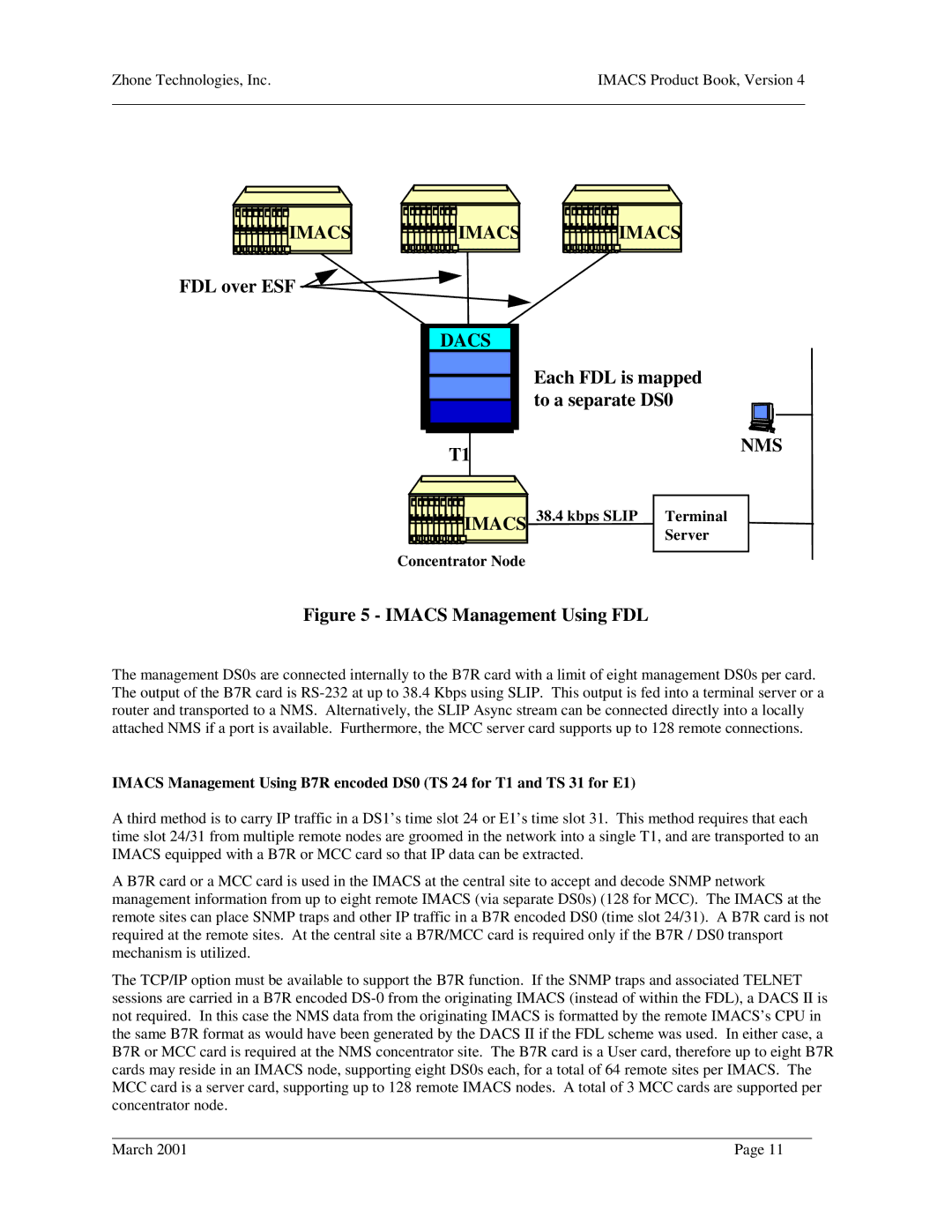
Zhone Technologies, Inc. | IMACS Product Book, Version 4 |
|
|
IMACS |
FDL over ESF 
IMACS | IMACS |
DACS
Each FDL is mapped to a separate DS0
T1 |
| NMS |
|
| |
|
|
|
IMACS 38.4 kbps SLIP | Terminal |
| Server |
Concentrator Node |
|
Figure 5 - IMACS Management Using FDL
The management DS0s are connected internally to the B7R card with a limit of eight management DS0s per card. The output of the B7R card is
IMACS Management Using B7R encoded DS0 (TS 24 for T1 and TS 31 for E1)
A third method is to carry IP traffic in a DS1’s time slot 24 or E1’s time slot 31. This method requires that each time slot 24/31 from multiple remote nodes are groomed in the network into a single T1, and are transported to an IMACS equipped with a B7R or MCC card so that IP data can be extracted.
A B7R card or a MCC card is used in the IMACS at the central site to accept and decode SNMP network management information from up to eight remote IMACS (via separate DS0s) (128 for MCC). The IMACS at the remote sites can place SNMP traps and other IP traffic in a B7R encoded DS0 (time slot 24/31). A B7R card is not required at the remote sites. At the central site a B7R/MCC card is required only if the B7R / DS0 transport mechanism is utilized.
The TCP/IP option must be available to support the B7R function. If the SNMP traps and associated TELNET sessions are carried in a B7R encoded
March 2001 | Page 11 |
